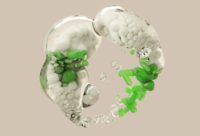Tools for liposome engineering
Liposome calculation
This spreadsheet calculates number of liposomes, number of solute molecules per liposome, % of internal volume taken by the lumen of liposomes and volume per liposome.
You can also calculate number of molecules per liposome for embedding molecules in outer leaflet of the liposome.
To use this spreadsheet, you need to change minimum two values: lipid concentration and liposome diameter.
Please note the units! Lipid concentration is in millimoles (mM) and liposome diameter is in nanometers (nm).
Type the input values into the green fields.
Do not modify the blue fields unless you understand the equations and values used here.
If you make a mistake or want to start over, refresh the page.
You can download the spreadsheet using the download icon at the bottom of the frame.
This spreadsheet is calibrated for phospholipids only. Specifically, for POPC, with surface area of 0.7nm2. We used this spreadsheet for other phospholipids too, especially diacyl lipids with modified headgroups should have similar surface area.
If you want to do calculations for fatty acids, change the surface area (nm2) value to 0.35.
This spreadsheet makes the following assumptions: all liposomes are unilamelar, equal in size and spherical.
We would appreciate if you put our lab in acknowledgments when you use this spreadsheet for published work.
What is behind the spreadsheet
The efficiency of solute encapsulation inside POPC liposomes of a given radius r (nm) at a given concentration c (mM) can be estimated using this formula, used in the Szostak Laboratory and empirically confirmed by encapsulation experiments :
%internal volume = vol_liposome*liposomes_ml*10-19
Where:
vol_liposome = (4/3)*Pi*(r3)
is the volume of the lumen of a single liposome, in nm3;
liposomes_ml = surface_area_ml/area_liposome is the number of liposomes per 1 mL;
surface_area_ml = (c*10^-6)*((760*10^21)/0.9*NA)/2.5)/2
is the surface area of liposomes per 1 mL of solution of a given c (mM), with POPC MW=760 and length of the lipid bilayer approximated to 2.5nm; NA is Avogadro’s number;
and finally,
area_liposome = 4*Pi*(r2)
is the surface area of the liposome outer leaflet, in nm2.
These calculations were made with the assumption that liposome curvature is negligible, so the inner and outer leaflet contain an equal number of lipids and have equal surface area. The thickness of the bilayer was approximated at 2.5 nm. (1)
The addition of cholesterol increases bilayer thickness up to 30%, thus affecting the encapsulation rate (2) , but we cannot reliably estimate the influence of cholesterol on packing density and surface area of the liposomes.
According to this formula, a 25 mM solution of 200 nm POPC liposomes will contain ~14% of the total volume encapsulated inside liposomes.
In reality, the encapsulation rate of liposomes used in our experiments is likely lower. This is due to factors like the presence of cholesterol in POPC membranes and the fact, that in liposomes extruded through, e.g., a 200 nm filter, the size distribution of liposomes varies greatly and is, on average, smaller than 200nm. (3-5)
The differences in yield of protein synthesis inside synthetic cells, explained by the difference in efficiency of encapsulating the TX/TL enzyme mix, have been observed . (6)
1. Lewis, B. a & Engelman, D. M. Lipid bilayer thickness varies linearly with acyl chain length in fluid phosphatidylcholine vesicles. J. Mol. Biol. 166, 211–217 (1983).
2. Nezil, F. a. & Bloom, M. Combined influence of cholesterol and synthetic amphiphillic peptides upon bilayer thickness in model membranes. Biophys. J. 61, 1176–1183 (1992).
3. Jousma, H. et al. Characterization of liposomes. The influence of extrusion of multilamellar vesicles through polycarbonate membranes on particle size, particle size distribution and number of bilayers. Int. J. Pharm. 35, 263–274 (1987).
4. Olson, F., Hunt, C. a, Szoka, F. C., Vail, W. J. & Papahadjopoulos, D. Preparation of liposomes of defined size distribution by extrusion through polycarbonate membranes. Biochim. Biophys. Acta 557, 9–23 (1979).
5. Berger, N., Sachse, a., Bender, J., Schubert, R. & Brandl, M. Filter extrusion of liposomes using different devices: Comparison of liposome size, encapsulation efficiency, and process characteristics. Int. J. Pharm. 223, 55–68 (2001).
6. Caschera, F. & Noireaux, V. Compartmentalization of an all-E. coli Cell-Free Expression System for the Construction of a Minimal Cell. Artif. Life 22, 185-95 (2016).






